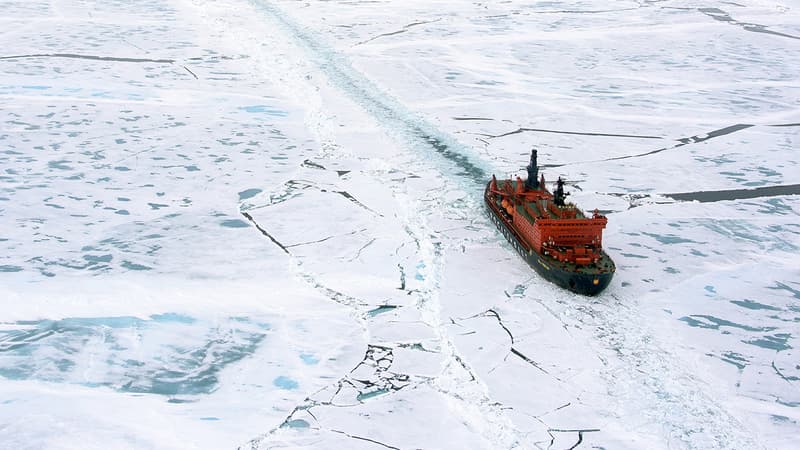This is a world first: this week, a Chinese container ship launched the first regular commercial voyage through the Arctic (near the North Pole). A shortcut made possible by melting ice that halves the time needed to connect China with Europe. A logistical feat, but above all a strong geopolitical symbol. Ultimately, Beijing and Moscow are joining forces to transform the Arctic into a new artery of global trade.
Departing the Chinese port of Ningbo on September 22, the container ship crossed the Bering Strait, skirted the Russian coast and arrived in Felixstowe, UK, on Monday, October 13. In just 20 days, this 294-meter giant traveled 8,000 nautical miles from the north (14,816 km). It would have taken 40 days, double that, to cross the Suez Canal. A trip not only shorter, but also less risky than a passage through the Red Sea. This route, called “Arctic Express”, inaugurates a new regular line between China and Europe, operated by the Chinese company Sealegend.
One in every five containers in the world on the China-Europe axis
Until now, Suez remained one of the most strategic corridors on the planet: one in every five containers in the world transits through the China-Europe axis, almost always through the Suez Canal. This represents 12,000 ships a year and 700 million tons of goods connecting Chinese ports with Rotterdam, Antwerp or Le Havre.
But the melting of the ice changes the situation. Ten years ago, the Northern route was only open two or three months a year. Now it is almost ten months a year and the warming of the Arctic is four times faster than the global average.
For China, this route is an alternative to saturated or unstable sea routes. Beijing launched its “Polar Silk Road” strategy in 2018. Beyond the transportation time saved to Europe, the Arctic would represent 13% of the world’s oil and 30% of the world’s yet-to-be discovered natural gas. China has already invested in gas projects such as Yamal in Russia and is interested in Greenland’s resources. The challenge for Beijing: ensuring its energy needs.
Moscow, for its part, remains fundamental in this strategic region. It owns more than half of the Arctic coasts, or a quarter of Russia’s borders. The entire new route passes within the Russian exclusive economic zone.
Moscow blocks the Arctic sea route
In other words, any ship wishing to take the Arctic route must obtain clearance from Russian authorities and often must be escorted by a Russian icebreaker. For example, in 2022 a 100,000-tonne bulk carrier would have to pay $720,000 to benefit from this escort.
At the Valdaï Club (his study center), Vladimir Putin launched an appeal to investors:
Kremlin goal: reach 130 million tons of cargo per year through the Arctic by 2035, up from 32 million in 2020.
The new “cold war” of the North
The United States has no intention of remaining outside this area of Arctic influence. The Pentagon fears Sino-Russian cooperation: a new axis of power, a new commercial and military “highway” that would escape Western control.
Hence the – discreet – increase in power of US and allied patrols in the Arctic, so as not to leave Moscow and Beijing alone on the ice.
Donald Trump just signed a memorandum on October 8 authorizing the construction of American icebreakers to reinforce presence and security in the Arctic. Which remains theoretical, because the situation of the American shipyards is catastrophic.
The Arctic is now at the center of the new US strategic doctrine, which aims to disconnect from Europe to concentrate on this theater of operations (where the Indo-Pacific) is considered a higher priority.
Greenland, in particular, has once again become a major problem. Washington wants to establish a port and logistics network there to secure the North Atlantic and monitor the Russian Arctic route.
Source: BFM TV


